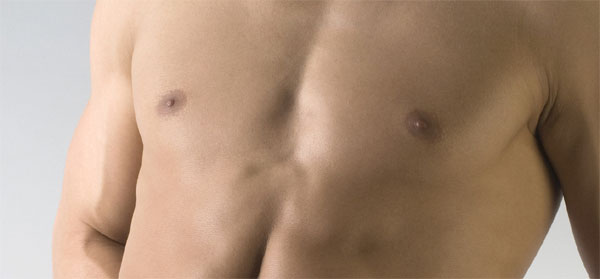While it might be true that men and women are only 8% different genetically or physically, some of those differences are striking and important. One of the most important distinctions between men and women (at least in men’s eyes) is the chest. Men desire strong, solid pectoral muscles and scoff flabby, loose fat and skin in that area. Perhaps this is the reason for the significant distress that often occurs when men develop breast tissue in the pectoral region.
What is gynecomastia?
The development of abnormally large breasts in males is called gynecomastia and its treatment is one of the top five most common cosmetic plastic surgeries performed in men. According to some estimates, as many as four of every ten adult men has gynecomastia. The condition is accompanied with emotional stress and trauma if it first occurs in childhood or adolescence.
Once men reach age 60, two-thirds of them qualify for the diagnosis. Despite being so common, most men with gynecomastia hide their chest from virtually everyone out of shame. Few have the confidence to even bring up the issue with their doctor or to seek treatment.
In fact, most men think that nothing can be done about gynecomastia, which is unfortunate and a potentially dangerous. While most cases of gynecomastia have no specific or identifiable cause, some cases can be the result of serious diseases. Therefore, men who have abnormally large breast tissue should be evaluated for hormonal disorders.
You can have it one of two ways
Despite a significant amount of shame and embarrassment, or perhaps because of it, many men are seeking breast reduction surgery. There are generally two ways to surgically remove breast tissue in men, either by liposuction or by surgical resection.
The decision to proceed with one method or the other is based on patient preference but also on the composition of the breast tissue itself. If the area is filled mostly with fat then liposuction can be extremely effective. On the other hand, if the man suffers from true gynecomastia, the area is actually breast tissue, which is glandular and not easily removed with traditional liposuction.
In these cases, the chest is opened with a surgical incision and the glandular tissue is directly cut away and removed. In skilled hands, both approaches can have excellent results.
Male breast reduction surgery cost
At the present time, male breast reduction surgery is not covered by most (if not all) health insurance companies. This is true despite the psychological trauma and hardship that is experienced by some men with gynecomastia—it is a cosmetic procedure.
The American Society for Aesthetic Plastic Surgery surveyed the surgeons in its membership and found that the average surgeon fees for male breast reduction surgery were about $3,500. Associated costs could increase this figure by an additional $1,500 depending on anesthesia and surgical venue.
Regardless of the rather high out-of-pocket costs, over 20,000 men seek out breast reduction surgery for gynecomastia each year. This number is expected to rise sharply as more men realize that surgical correction treatment is possible and the stigma associated with male cosmetic surgery continues to decline. For the millions of men that silently suffer from gynecomastia, the slight stigma of surgery and cost and no match for a chest without excessive breast tissue.
